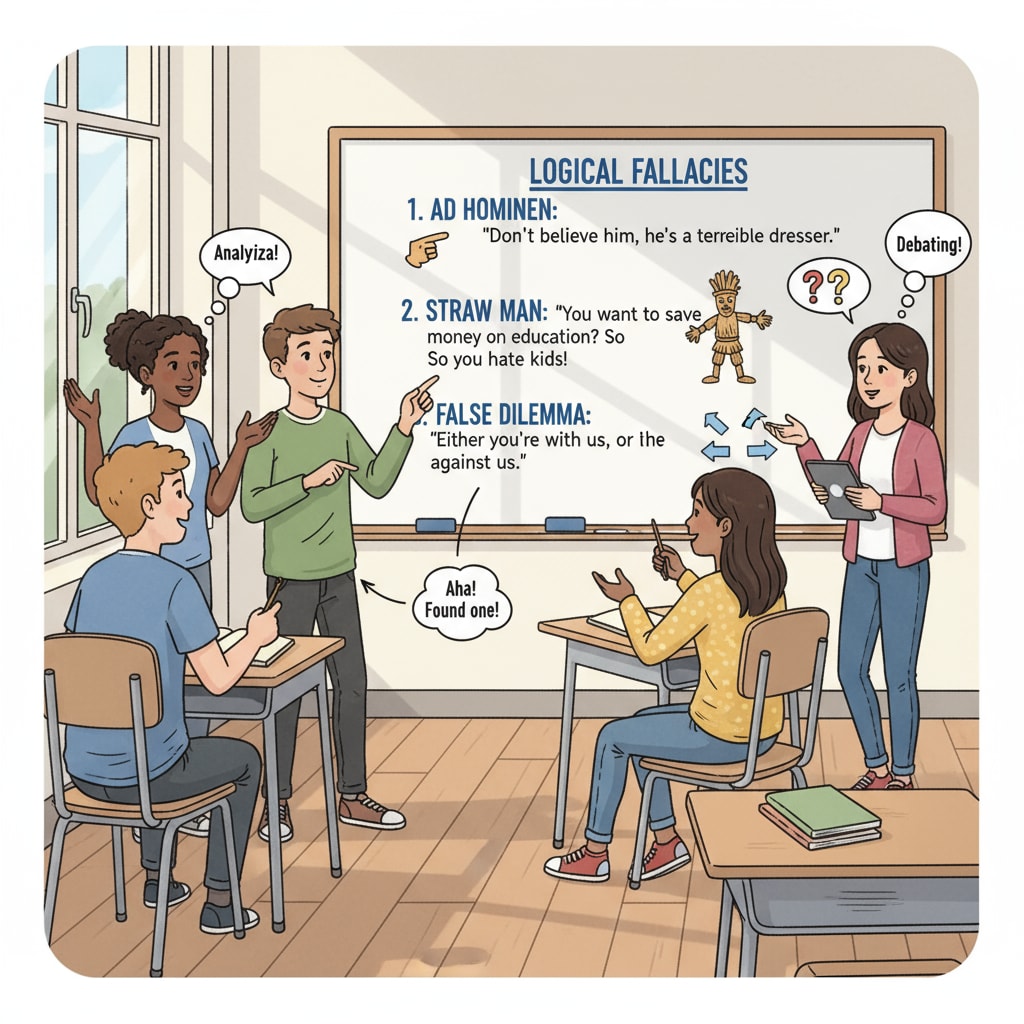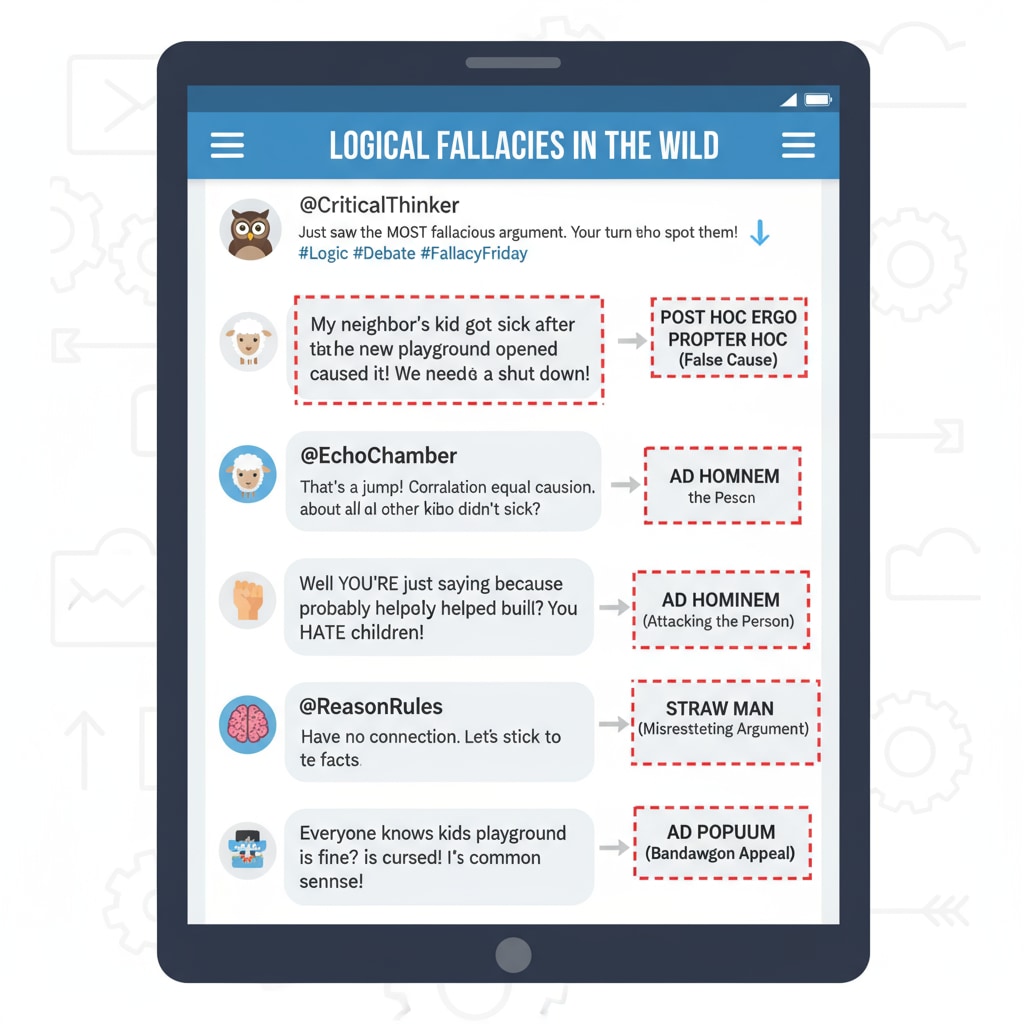In the modern world filled with an avalanche of information and a landscape of polarized opinions, the concepts of logical fallacies, critical thinking, and propaganda recognition have become increasingly vital in high school education. As students are constantly bombarded with various messages from different sources, it’s crucial to equip them with the tools to analyze and understand the validity of these arguments.

The Prevalence of Logical Fallacies in the Information Age
In today’s digital age, information spreads at an unprecedented speed. Social media, news outlets, and advertising are all platforms where logical fallacies run rampant. For example, the “ad hominem” fallacy, which attacks the person rather than the argument, is often used in political debates. By teaching students to recognize such fallacies, we empower them to see through the surface of an argument. According to Wikipedia’s page on logical fallacies, there are numerous types of fallacies that can mislead people. This knowledge is the first step in developing critical thinking skills.

Cultivating Critical Thinking through Logical Fallacy Education
Logical fallacy teaching is closely intertwined with the development of critical thinking. When students learn to identify fallacies, they are encouraged to question assumptions, evaluate evidence, and form their own opinions. For instance, the “slippery slope” fallacy, which assumes that one small step will lead to a chain of disastrous events, can be dissected by students. Through such analysis, they learn to think more deeply and make more informed decisions. As stated on Britannica’s entry on critical thinking, critical thinking is a key skill for success in various aspects of life.
Moreover, by understanding logical fallacies, students can become more effective communicators. They can construct stronger arguments and avoid making common mistakes in their own reasoning. This not only benefits their academic performance but also prepares them for future careers and social interactions.
Readability guidance: As seen, the connection between logical fallacies and critical thinking is significant. Short paragraphs like these help in better comprehension. Using lists can further simplify complex ideas, and transition words like ‘moreover’ keep the flow smooth.


